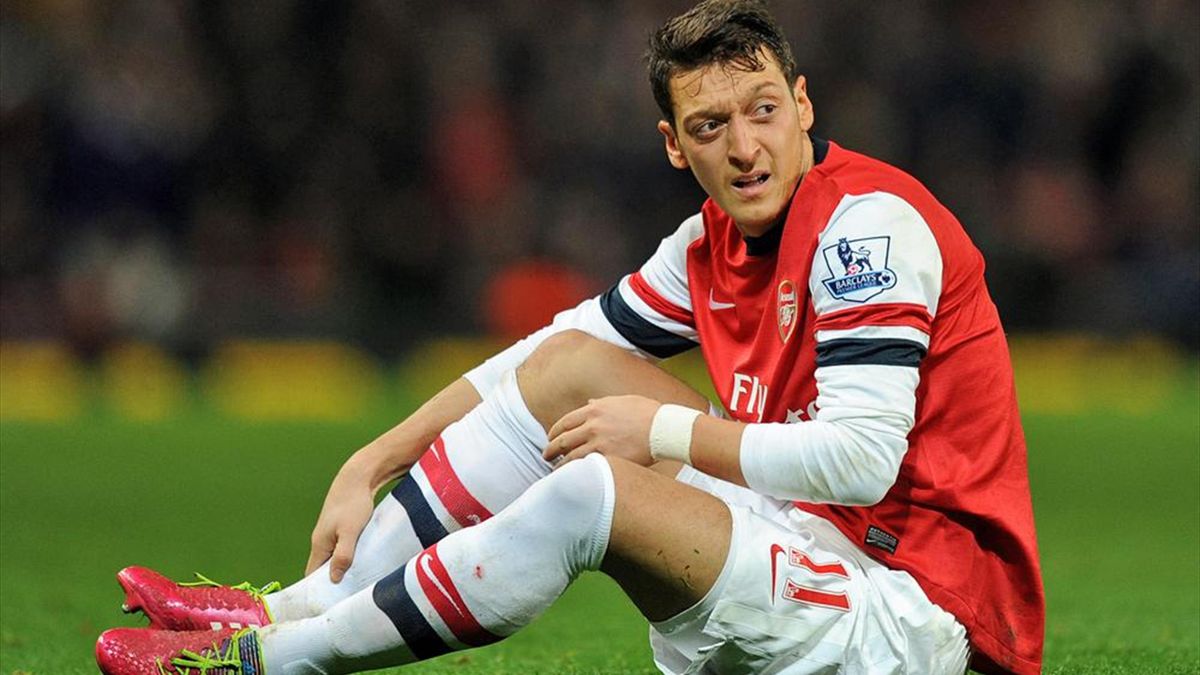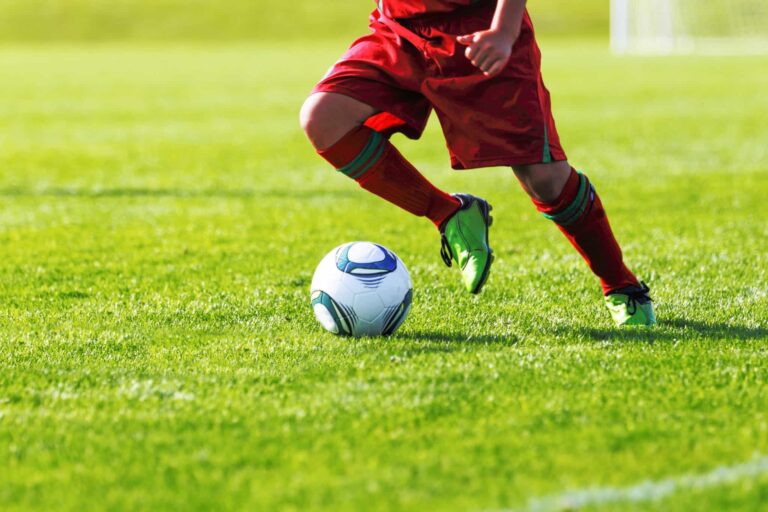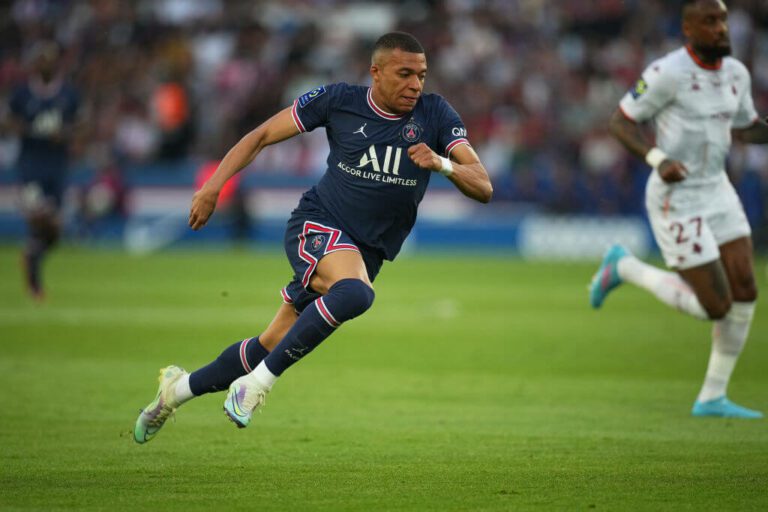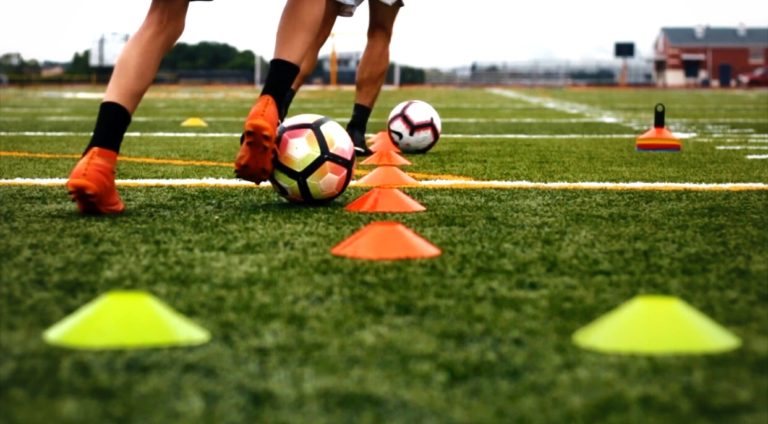How to Prevent Football Injuries
Injury Prevention in Football
Football is a high-impact sport that requires a combination of strength, speed, and agility. However, with the physical demands of the sport comes the risk of injury. In this post, we will discuss ways for you to prevent injuries in football by focusing on five key areas: strength, mobility, warming up, nutrition, and sleep.
There’s really nothing worse in football than getting sidelined by a serious injury. It’s one of the most frustrating things to deal with as a player. As the saying goes, “The best ability is availability”. Every player has had their own personal battle with injuries. The goal of this article is to help give you a blueprint to protect yourself in the future.
Most Common Injuries in Football
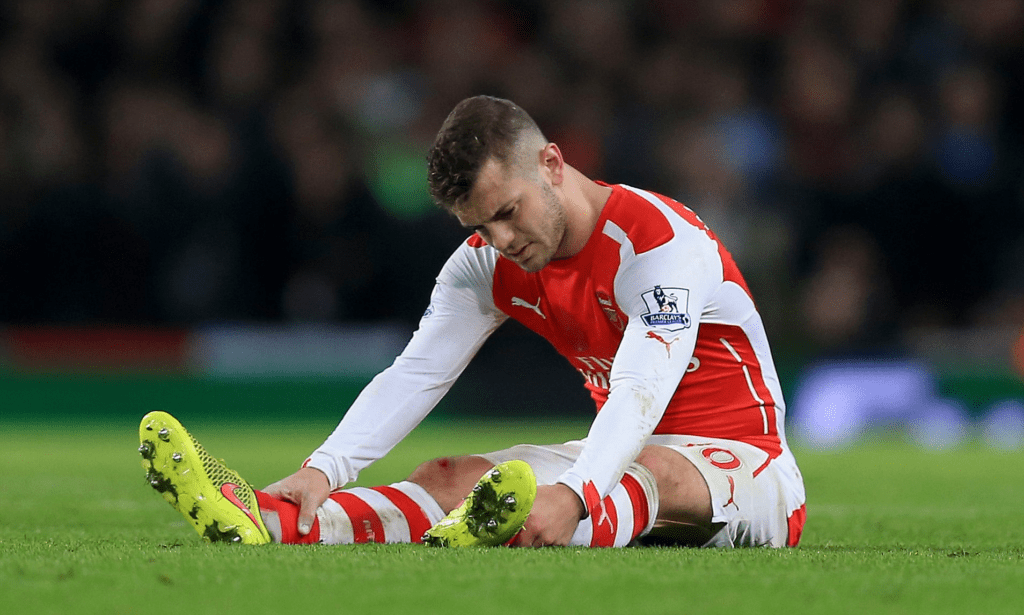
Football players are most likely to suffer from lower body injuries while playing. Injuries can often occur unexpectedly during a training session or match. Below, I’ve listed the most common types of injuries that footballers experience.
- Ankle Sprain
- Hamstring Strain
- Groin Pull
- Knee Injury (ACL, MCL, LCL)
- Pulled Calf
- Plantar Fasciitis
Luckily there are a few key ways that you can protect your body against these injuries. The first thing you should focus on is improving your strength and mobility.
Increase Your Strength & Mobility
Strength is a crucial component of injury prevention in football. By building strong muscles, tendons, and ligaments, you can better withstand the physical demands of the sport and reduce the risk of injury. A well-rounded strength training program should include exercises that target the major muscle groups, such as the chest, back, shoulders, legs, and core. Resistance training exercises such as squats, deadlifts, and sled pulls are effective for building strength.
Mobility is the ability of your joints to move through their full range of motion. In football, mobility is crucial for allowing you to perform at your best and avoiding injury. Improving your mobility involves doing exercises that stretch your muscles through their natural range motion.
Exercises For Injury Prevention
When choosing exercises that will support injury prevention, you want to find movements that prepare your body for the physical demands of football. These exercises can be incorporated into your schedule year round to ensure your body is prepared to perform.
It’s important to note that you don’t want to do any strenuous workouts directly before a match. So focus on low intensity movements on the day before a big game.
Sprinting

Sprinting is probably the most football specific exercise there is. It’s also one of the most common ways that players get injured while playing. Sprinting is taxing on all of the muscles of the lower body, including your quads, glutes, hamstrings, calves core, and hip flexors.
If you don’t incorporate sprinting into your training, you’re putting your body at risk when you enter a match. Check out pro player Matt Sheldon’s video on becoming faster to see how you can safely incorporate sprinting into your routine.
Plyometrics

Plyometrics are movements that involve the use of explosive power and strength. These exercises could include box jumps, squat jumps, high knees, and many more. Doing plyometrics helps prepare your joints for high impact activities.
Winning the ball on the field will require you to jump, slide, and lunge in a variety of situations. Plyometrics will help develop your coordination and balance, which will improve your overall athleticism on the pitch. They’re a great way to become a more explosive player and help bulletproof your body.
Sled Pulls

Sled pulls are an exercise that I’ve recently been incorporating into my routine. Performing them is as simple as it sounds. You simply drag a weighted sled backwards across a smooth surface like turf or grass.
Trainer Ben Patrick does a great job of explaining the benefits of sled pulls for the knees and your lower body. Essentially, pulling a weighted sled helps strengthen the ligaments surrounding your knee joint. As knee injuries are very common for footballers, a low impact exercise like the sled pull is great to have in your rotation.
Split Squats
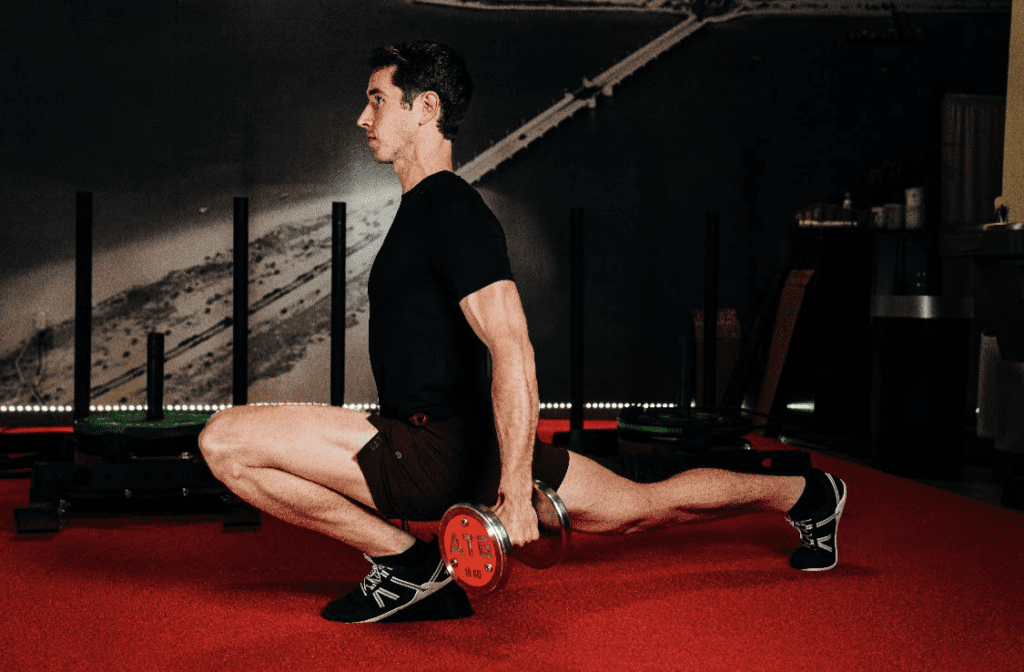
Split squats are one of the most beneficial lower body exercises I’ve ever utilized. They are both challenging, yet scalable for anyone at any level. What makes the split squat so difficult is that it requires strength, stability, and mobility to be performed at a high level.
From the perspective of injury prevention, the split squat both lengthens and strengthens your hip flexor muscles. These smaller muscles are often overlooked and can cause injuries in football players. The split squat will also help to seriously develop your quad and glute muscles.
Nordic Curls
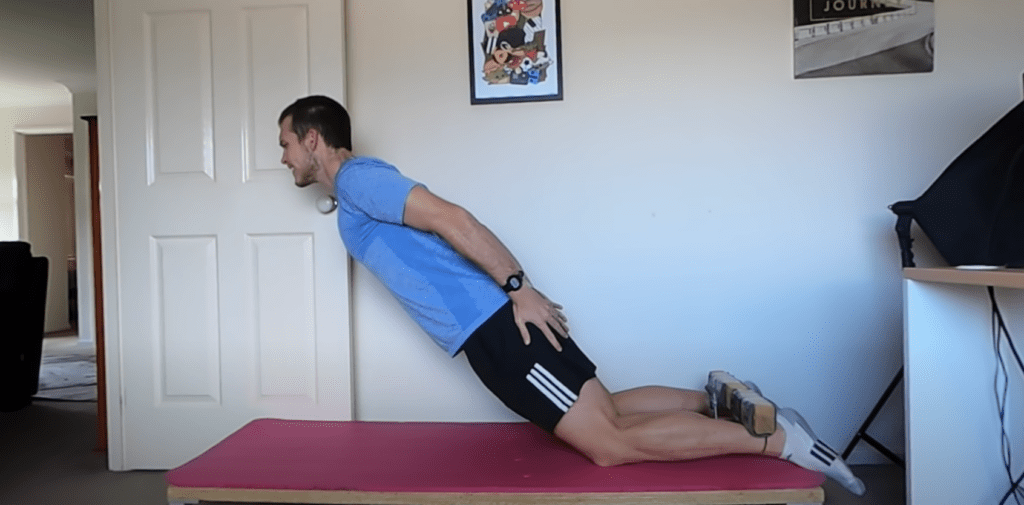
Nordic curls are one of the best exercises for directly targeting your hamstrings. It’s a unique exercise, as it involves hinging at the knees rather than the hips. Not only will the nordic curl make your hamstrings stronger, but it will also help strengthen the muscles responsible for knee flexion.
If you’re just starting out with this exercise, having a friend hold your ankles in place is really helpful. Keep in mind it’s a challenging exercise to perform, so focus on building up strength overtime by performing simpler regressions.
Warming Up

A proper warm-up is an essential part of injury prevention in football. A good warm-up should be tailored to your specific needs, but should generally include dynamic stretching, such as leg swings, and light cardio, such as jogging and short sprints.
The goal of the warm-up is to increase blood flow to the muscles and prepare the body for the physical demands of the game.
Nutrition

Nutrition plays an important role in injury prevention in football. Eating a well-balanced diet that includes a variety of fruits, vegetables, proteins, and whole grains can support your overall health and physical fitness. Additionally, you should make sure you are properly hydrated before, during, and after games and practices.
Sleep

Adequate sleep is crucial for injury prevention in football. When you are well-rested, you are better able to recover from the physical demands of the sport. It is recommended that you get 7 to 9 hours of sleep per night. Also, good sleep habits such as reducing screen time, avoiding caffeine close to bedtime, and sticking to a schedule, can help you fall asleep faster and stay asleep longer.
Conclusion
In conclusion, preventing injuries in football requires a holistic approach that includes strength training, improving mobility, proper warm-up, a balanced diet, and adequate sleep. By focusing on these five areas, you can reduce your risk of injury and perform at your best on the field.
- Most Comfortable Football Boots of 2024
- Nike Phantom GX 2 vs Adidas Predator Elite
- Puma Future 7 Pro – Review
- Mizuno Morelia 2 Elite Review
- Nike Phantom GX 2 Elite Review
- Width Matters: Choosing the Right Football Boots for Your Feet
- Nike Premier 3 vs Copa Gloro vs NB 442 V2 Pro
- The Best Value Adidas Boot – Copa Gloro Review
- Best Predator Ever? – Predator Elite Review
